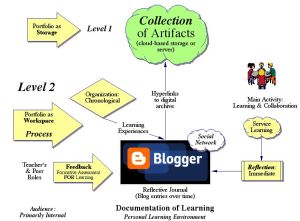
I've been thinking a lot lately about the variety of tools that we need to offer to our students in order for them to be successful. There are 1:1 computing initiatives across the country right now where the focus is sometimes more on the cool new device rather than the instructional purposes. Students are being given devices and teachers are working hard to design activities to fit the device. We need to reverse this trend.
My husband gave me a great analogy that I've been using a lot lately. He talked about having a saw as your only tool and how that would cause a lot of trouble around the house. You can't hang a photo with a saw. Maybe you need a hammer in your toolbox. And a screwdriver. Even a pencil. You get the idea.
There is no 1:1 device that is going to meet all the needs of a student. There are arguments for and against all 1:1 devices that districts can afford, so we have to realize that we still need a variety of tools in our schools. One idea is to have sets of other devices in the media center for checkout to students or teachers as the need arises.
I recently read a paper entitled, "Education in the World of Choice." The authors talk about how districts can move forward by offering choice while avoiding chaos. The illustration shows four models that districts sometimes follow: Cafe Fixed Menu, Cafeteria Buffet, Private Dining Club, and Sit with the Cool Kids. The paper gave me "food for thought" as we face crucial decisions about the tools and resources that we make available to our students and teachers. We don't want chaos with too many tools that can't be supported or sustained, but we also don't want to leave our teachers and students with a fixed menu that won't give us enough tools in our toolbox.
I would love to hear your thoughts on what tools you make available in your school and how you manage choice while avoiding chaos. What's in your toolbox?




